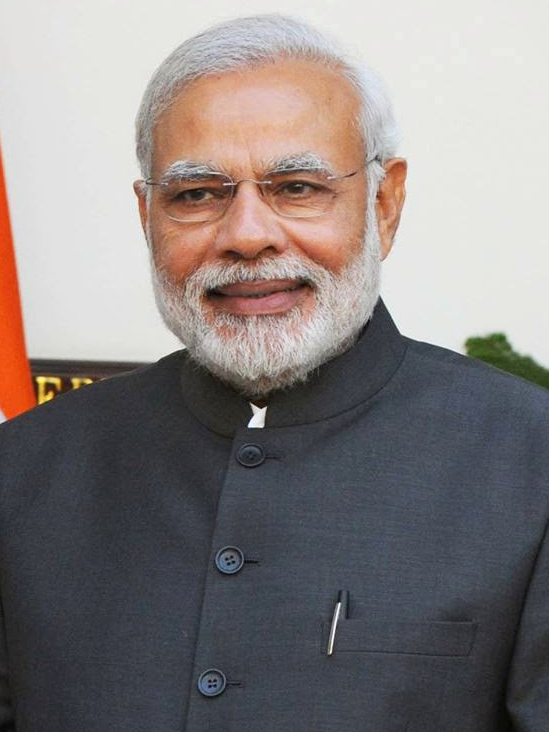Indian Prime Minister Narendra Modi has won a third consecutive term, but it was a much tighter general election than anticipated. His Bharatiya Janata Party (BJP) appears set to fall short of an outright majority, leading in the 543-seat parliament but below the required 272 seats. However, its coalition partners have gained additional seats, ensuring a potential coalition government.
The results are a personal blow to Mr. Modi, who has always secured majorities in previous elections as both the chief minister of Gujarat state and India’s prime minister. This election marks a surprising revival for the Congress Party-led INDIA opposition alliance, defying earlier predictions of its decline and sharply diverging from both exit polls and pre-election surveys.
Historic Election Turnout
More than 640 million people voted in a marathon seven-week election, hailed as a “world record” by election authorities. Nearly half of the voters were women. Many world leaders have struggled in their third-term elections, and Mr. Modi is no exception. Despite the BJP remaining India’s single largest party by seats, the significant loss of more than 50 seats for his party diminishes the allure of a third term.
Reasons Behind Modi’s Reduced Majority
Mr. Modi’s supporters attribute his third-term victory to several factors: a record of stable governance, the appeal of continuity, efficient welfare programs, and the perception that he has enhanced India’s global image. To his Hindu nationalist base, Mr. Modi delivered on key promises, such as revoking the autonomy of Indian-administered Kashmir, building the Ram temple in Ayodhya, and implementing a controversial citizenship law. Many BJP-ruled states have also implemented laws tightening regulations on interfaith marriages.
However, several issues may have contributed to the BJP’s significant drop in seats, including joblessness, rising prices, growing inequality, and a controversial army recruitment reform. Mr. Modi’s harsh and divisive campaign, particularly targeting Muslims, could also have alienated voters in some regions.
Overreaching Campaign Slogan
Mr. Modi’s ambitious slogan “Ab ki baar, 400 paar,” aiming for more than 400 seats for his NDA alliance, may have backfired, with such a massive majority raising fears of constitutional changes among the poor. The BJP’s largest setback occurred in Uttar Pradesh (UP), a state larger than the United Kingdom and three times as populous. With 80 parliamentary seats, UP holds significant sway in national politics.
Key Takeaways from the Election
A Dent in Brand Modi: Mr. Modi’s popularity has been attributed to his mastery of branding, transforming routine events into spectacles and astute messaging. A weak opposition and a largely friendly media also helped him build his brand. The election results show that Brand Modi has lost some of its shine, indicating that even Mr. Modi is susceptible to anti-incumbency.
Return to Coalition Politics: India has a history of coalition governments, although some in the early 1990s and 2000s played a significant role in implementing economic reforms. If the BJP forms the government, it will be dependent on allies and will need to adopt a more consultative and deliberative approach. This dependency makes it vulnerable to collapse if allies feel neglected.

A Jolt to the Dominant BJP: Mr. Modi’s uninterrupted decade-long reign has underscored India’s embrace of what some political scientists term the one-party dominant system. The election results restore India to what many consider “normal politics,” with a range of parties sharing and competing for power.
A Resurgent Opposition: The results will energize the much-criticized Congress-led opposition. Despite facing a partisan media and fewer resources, the opposition ran a spirited campaign and narrowed the gap. There is more hope for them ahead, with five states set for elections over the next 14 months, including Maharashtra, Jharkhand, and Haryana this year.
Potential Implications of a Third Term
India faces significant challenges that require attention and healing. While the economy is on the upswing, fueled by government spending, inequality is rising. Private investment and consumption must increase, and the poor and the middle class will need more money to spend. Job creation is essential to meet the aspirations of younger voters, who constitute a significant portion of India’s population.
Mr. Modi has faced criticism for marginalizing Muslims, India’s largest minority, and stifling dissent, with leading opposition figures jailed on what they claim are trumped-up charges. Third terms have often proved to be rocky for many leaders, with unforeseen events potentially disrupting plans and governance.




